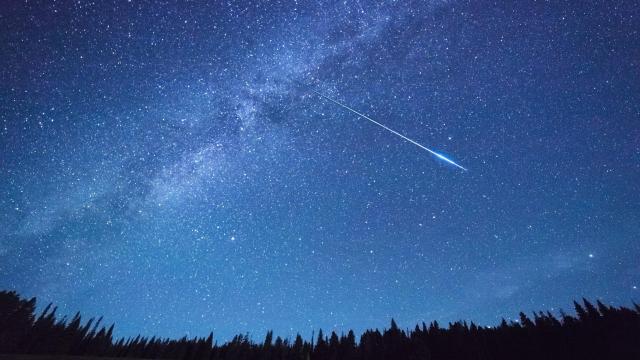Every year in autumn, our planet passes through a ribbon of space-debris left behind by Halley’s Comet, and Earth’s atmosphere colliding with this trail of ice and dust provides an impressive annual light show called the Orionids meteor shower.
When is the Orionid meteor shower?
The first Orionid shooting stars are already showing up in the sky, and the show will continue through the first week in November or so, but the peak of the meteor shower will happen in the early morning between October 21 and 22. Residents of the Northern Hemisphere who look at the southwestern part of the sky at around 3-4 a.m. can expect to see between 20 or 30 meteors per hour streaking across the sky until sunrise.
It will appear that the meteors are originating somewhere between the Orion constellation (hence the name) and the Gemini constellation, but they should be visible in other parts of the sky too, as long as it’s not too cloudy.
Orionid meteors are fast boys: These bits of ice and burning space dust slam into our atmosphere at 66 km per second, and when they burn up, they can produce some impressive light streaks and even the occasional fireball.
This is a good year for the Orionids meteor shower
This year, meteor-viewing conditions are very positive. The moon will be in its waning crescent form, so it won’t be super-bright, allowing us to see more of the space fireworks. A few nights later, on October 25, a new moon will ensure a sky that is as dark as possible and perfect for seeing shooting stars.
How to see the Orionids meteor shower
Meteor viewing is as easy as looking at the sky on a clear night and waiting, but if you want to elevate your experience, here are some tips:
- You don’t need binoculars or a telescope to see the Orionids — burying your face in binoculars will cut down your field of view and make it less likely to spot shooting stars. But bring them anyway, for the space station.
- Go somewhere away from lights, buildings, and trees. You want as little light pollution as possible and as wide a viewing area as you can get.
- Don’t alternate between looking at your phone and the sky or use a flashlight. You want your pupils to stay as dilated as possible, and it takes about 15 minutes for the irises to really open up.
- Bring a comfy chair, a warm blanket, and someone you care for deeply.
- Check out NASA’s “Spot the Station” site to see if the International Space Station is visible from your location, and if it is, check it out. It’s really cool.

Leave a Reply
You must be logged in to post a comment.